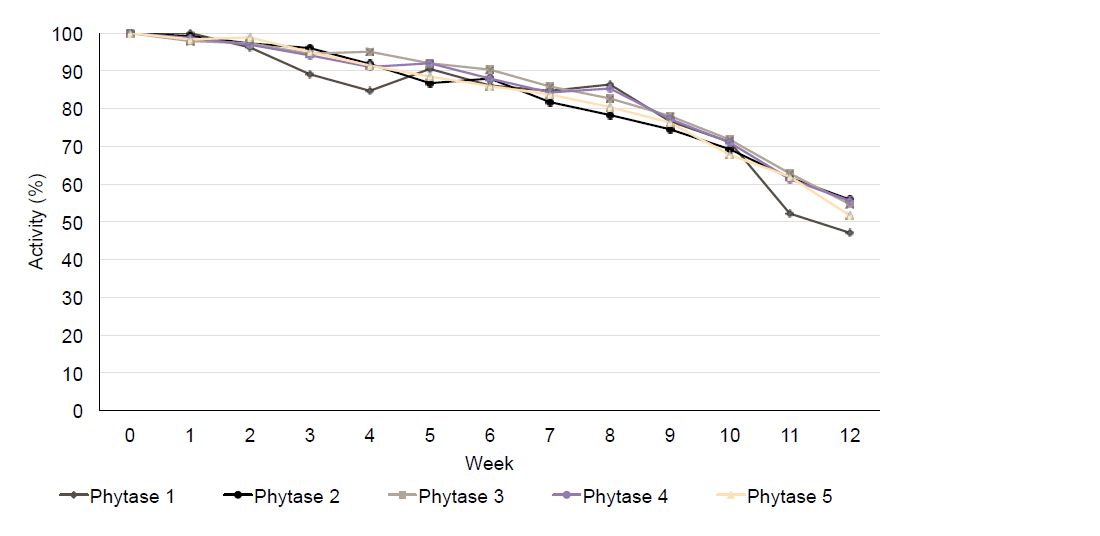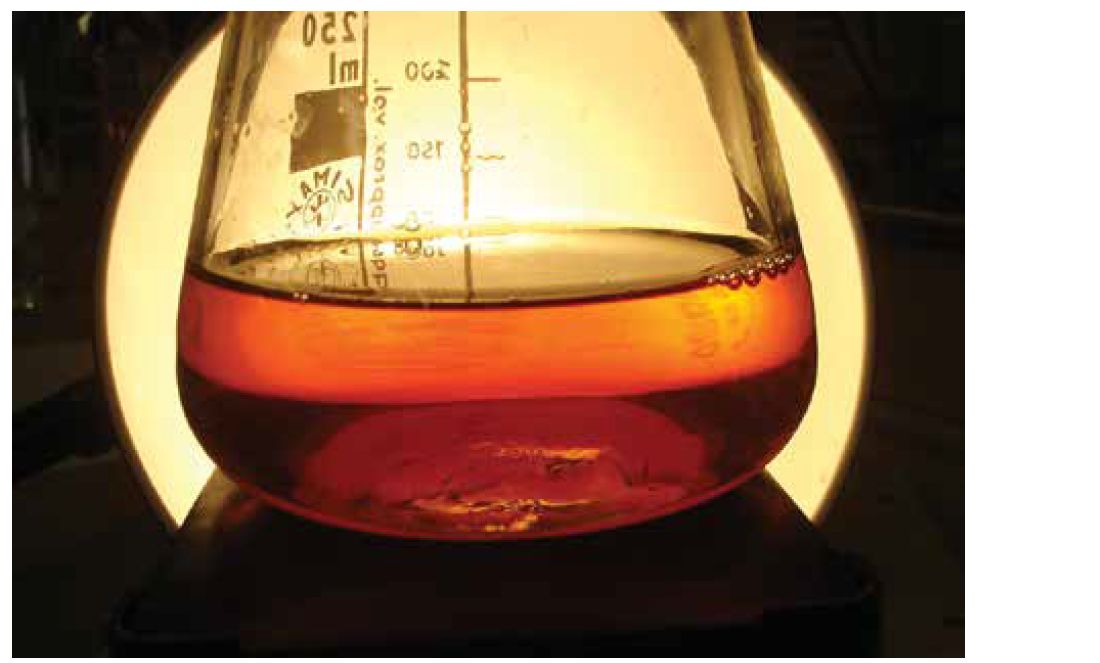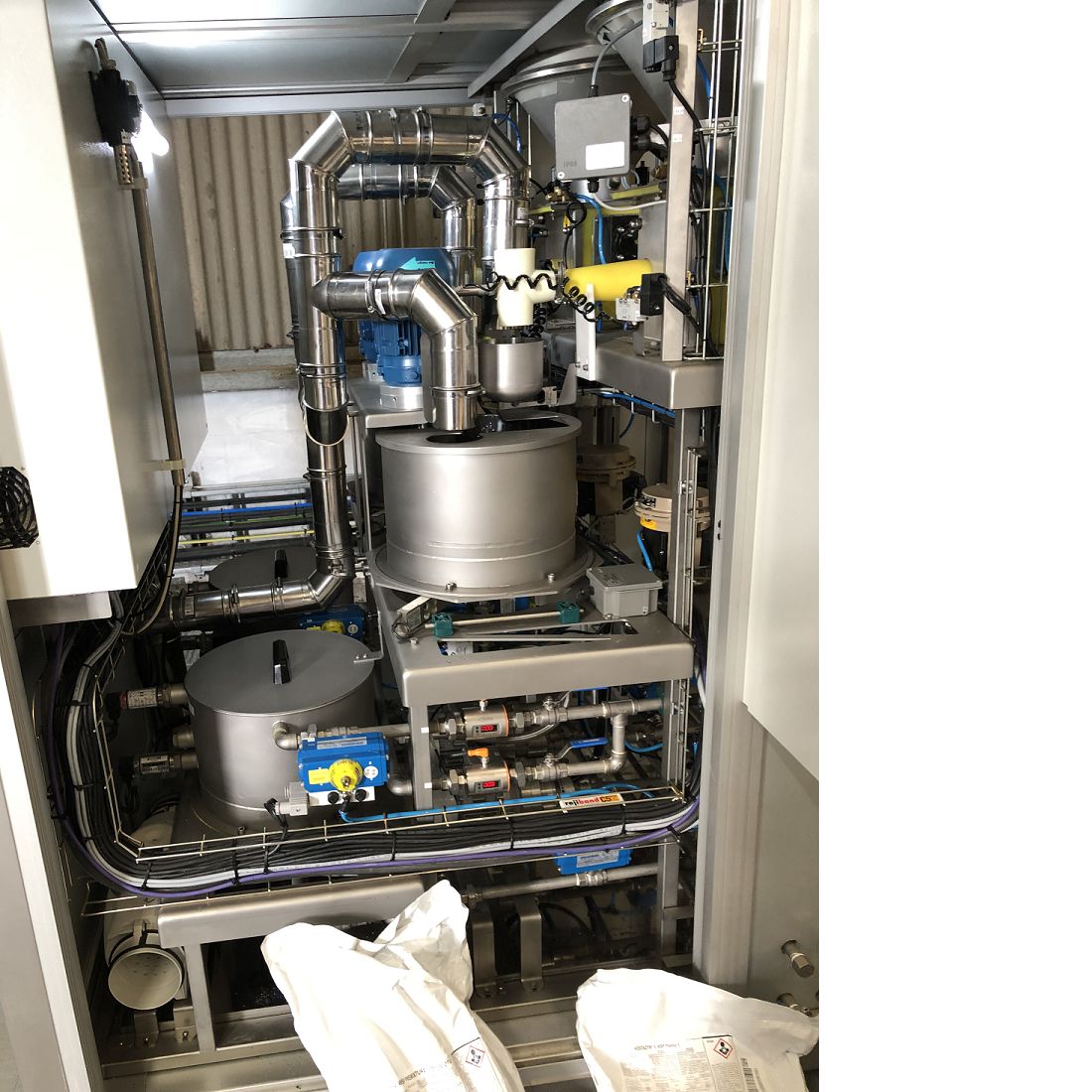Instant water soluble enzyme powders
Working with liquid enzymes packed in IBCs has many downsides as enzymes in liquid form tend to be less stable than dry enzymes (Figure 1).

It can be seen that the activity of bulk liquid phytase decreased on average by 47% when stored for 12 weeks at 40 oC. Therefore, IBCs with liquid enzyme require temperature controlled storage space and cooled transport. Additionally, IBCs take up floor space and handling often requires extra labour and results in leakage or spillage. It also makes more sense to mix the enzyme power on site and in-line, instead of shipping the liquid enzymes (with around 95% water) over long distances.
The development by Huvepharma of instant water soluble enzyme powders (WSP) like Hostazym X WSP, OptiPhos WSP and Hostazym P WSP has opened the way to producing liquid enzymes on-site and in-line at the feed mill as required (Figure 2). These dry WSP enzymes are packed in boxes containing 4 aluminium sealed bags of 5 kg each. One box of 20 kg containing 4 x 5 kg of WSP enzymes can replace two or three 1,000 litre IBCs filled with liquid enzymes.

With these WSP enzymes, liquid enzymes can be tailor made at the feed mill in any desired amount and concentration just prior to application with the PPLA. For dissolving WSP enzymes, the Huvematic has been developed (Figure 3) which allows the enzymes to be dissolved even in cold and hard water.
The Huvematic accurately weighs the required quantities of WSP enzymes and water, and mixes them together so the liquid enzyme is produced at the right concentration in-line. Two enzymes can be produced at the same time (e.g. a phytase and an NSPase) and the Huvematic has enough production capacity to serve multiple PPLA lines in the same feed mill.

Already used in the US
This recent innovation by Huvepharma is new in most areas of the world. However, it has already become common practice in the US where it was intensively tested for 3 years. Large broiler integrators in the US have embraced this technology to avoid inconveniences related to liquid enzymes in IBCs. The concept was initially used in the US for the use of a liquefied phytase (OptiPhos) and led to the installation of the Huvematic in multiple feed mills.
Due to its success, Huvepharma extended the concept for the production and application of liquefied NSPase (Hostazym X) using the same formulation technology developed in the R&D laboratories.
Huvematic and the WSP enzymes were officially launched in 2014. Recently, country registrations of the WSP enzymes have been achieved in India, Bangladesh, Thailand, Vietnam, Mexico, Brazil and even more countries, and Huvematic machines have been installed and operational for a number of years. Other countries will follow soon, in particular when the Huvematic concept is desired by local feed mills.
This concept has been enthusiastically welcomed in all climate zones and also in the hot and humid climates in much of Asia, solving the difficulties with IBC containers regarding stability, activity and extra labour. At the same time, partners have been established to support Huvepharma with installation and maintenance of equipment (Huvematic/PPLA) and related technical support allowing the implementation of the Huvematic concept in large poultry integrators.
Conclusion
WSP enzymes are a unique tool for the production of liquid enzymes on site, offering the nutritionist flexibility and security in formulation. Avoiding the need for IBCs reduces waste, spoilage, labour costs and saves on the environment. This concept has now been implemented worldwide for several years and provides a solid base of commercial experience for future new users.




